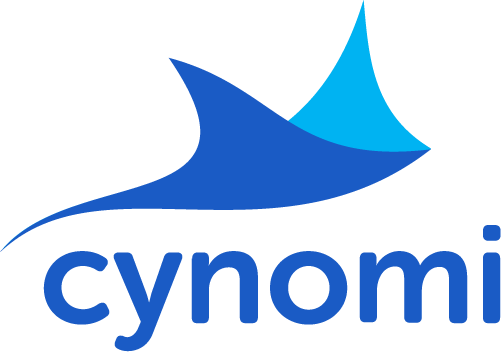
Use this guide alongside our brand content for founders and ScaleUp leaders at every stage. Skip to each step:
Insights
Buyer Foundations
Strategy
Activation
Brand Strategy
The umbrella approach that defines how your company shows up in the market and the plan of integrated tactics needed to achieve its objectives.
Insights
Actionable learnings about your buyers, competitors, and target market. The best approach is to leverage both qualitative and quantitative research to inform these insights. Study your existing data, but make sure you go beyond what you already have. Collecting and analyzing this information is critical to building a successful brand. Without knowing your buyers, your competitors, and your target market dynamics, you are flying blind and run the risk of wasting time and money on a brand project that goes nowhere.
- Buyer Insights: Learnings established from research (e.g., customer interviews, surveys), sales reps, and social listening channels (e.g., peer reviews, community forums) that define buyer pain points and why they aren’t being solved with existing solutions. Buyer insights provide the ability to educate sales, customer success, marketing, and product teams on prospective buyers and their behaviors. With this knowledge, go-to-market teams can focus on the touchpoints during the buying cycle that are most critical.
- Competitor Insights: Understanding your competitors’ strengths, weaknesses, threats, and opportunities will help identify the unique white space that your brand can own, differentiate your value from the competition, and objection handle so that that you can win ultimately win more deals.
- Target Market Dynamics: Having a clear understanding of your current market and where it is going will help ensure you align your product and positioning to both todays and tomorrow’s buyer needs. These insights include elements such as analyst predictions and economic shifts that impact the industries you sell into.
Buyer Foundations
Foundational inputs to your brand and go-to-market strategy that describe your target market, your ideal customer, what they care about, and how they purchase. Aligning your organization on your Total Addressable Market (TAM), your Ideal Customer Profile (ICP), Buyer Personas, and your Buyer’s Journey gets everyone on the same page around who your best customers are and how they like to engage with your brand. These foundations impact everything from target account lists to messaging and product roadmaps.
- Total Addressable Market (TAM): Total addressable market for your end-state product at 100% market share. Note that it is also important to understand your SAM (Serviceable Available Market), share of the market that you can attain based on your business model – your targets, and your SOM (Serviceable Obtainable Market), or the percentage of your SAM that you can realistically attain.
- Ideal Customer Profile (ICP): Documentation of the attributes that make up your “best” or most valuable customer accounts. Having a clear definition on the characteristics that make up these accounts allows you to better attract, engage, close, and retain business within those accounts. These attributes should include firmographic (e.g., employee count), environmental (e.g., technology traits), and behavioral data (e.g., has remote employees).
- Buyer Personas: Generalized representation of buyers, influencers, and users at your ICP that informs your GTM strategy, messaging and where to find them.
- Buyer’s Journey: Map encompasing a customer’s entire buying experience from pre-purchase to post-purchase.
Strategy
See the 5 core brand essentials that make up a successful brand strategy below:
1. Mission, Vision, and Values
Documenting these core building blocks provides not only a focal point for internal alignment and roadmap for the path ahead, but they are also an effective guide for making decisions. Everything you do should align with these statements.
- Mission: A mission statement focuses on your purpose today and what your organization does to achieve it. What is your reason for being? Keep in mind that it doesn’t just describe the organization’s output or who it wants to help… It captures the soul of the organization.
- Vision: A vision statement focuses on tomorrow and what your organization wants to achieve.
- Values: Your core values support your vision. These are your beliefs as an organization. When making a big decision, ask yourself if it is consistent with your values. Your values should stand out as uniquely yours.
2. Point of View (POV)
Your brand story. It tells the market how you’re different, the problems you solve, and why it matters to your target audience. Since we live in an attention-driven world and humans love stories, it’s no surprise the attention winner is the company that tells the best story. Your POV is your key to doing that. The POV is what gets your employees excited about going to work each day and the inspiration behind a first-time buyer deciding to purchase. The POV is made up of 4 parts:
- Challenge: The problem you solve (e.g., data is dirty and disconnected).
- Consequences: The pain the buyer feels because of your problem (e.g., lack of visibility leads to inefficiency, slowed revenue growth, and more closed lost deals).
- Future State: How your solution resolves the buyer’s pain and provides a different path forward (e.g., a single view into all data with actionable insights).
- Outcomes: The benefits made possible by your solution (e.g., greater team alignment and ROI, higher growth rates, and innovation that leads to more won deals and lasting competitive advantage).
3. Messaging & Positioning
Your Messaging & Positioning Framework (M&P Framework) clearly maps the value you deliver through a hierarchically organized set of words, terms, phrases, and statements. It is designed to align your organization and should be made centrally available. It ensures that your story is conveyed in a consistent manner and the differentiated value you deliver is positioned correctly across every interaction with the market. The M&P Framework has 5 parts:
- Problem Statement: The unique problem you solve, described in buyer language.
- Positioning Statement: How you are solving the problem in a competitively differentiated way. Clearly articulate your value prop and how it solves meaningful pain points.
- Core Message: What you want to be known for. The message that brings your positioning statement alive.
- Benefit Pillars: Succinct descriptions of the key customer benefits and product attributes you deliver.
- Proof Points: Examples that offer irrefutable evidence of the outcomes of your Benefit Pillars.
4. Category
Categories help people navigate a world of too many choices; they compartmentalize similar items to facilitate discovery and decision. A category strategy enables you to take the reins and position yourself versus the market positioning you. (Note: category design can be a distraction if done too early.)
5. Brand Identity
Brand Identity includes all visual elements of your brand, including the colors, fonts, logo, imagery, and design, that distinguish your brand in the consumer’s mind. Your brand identity should also include brand personality elements, such as tone of voice. Keep in mind, everything from the color of your logo to the curvature of your font will appeal to a certain emotion.
Brand Book
Clearly documents the rules, standards, and guidelines for bringing your brand to life. This is an important step to achieve consistency as your organization grows.
Brand Activation
The integrated campaign plan that you execute in order to get your brand out in the market. It is the compilation of tactics that will drives audience growth, engagement, and conversion. Continuous testing will help narrow in on the tactics that drive the greatest impact with your target audience. If activation isn’t prioritized, your entire brand strategy crumbles. Make sure this is a priority!
Deeper insight: Founder 101: Why and When to Invest in Brand








